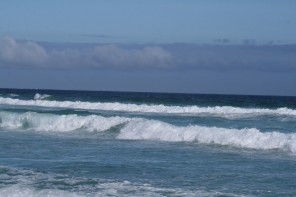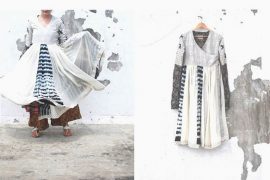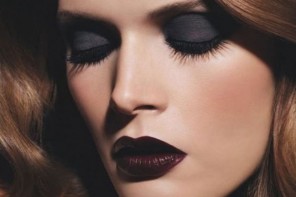Written by: Adrienne Brookbanks
Eco clothing is hardly a new thing, but the inventive and creative ways in which fashion designers are utilising sustainable materials continues to impress us fashionistas. liveeco takes a look at some of the latest winter fashions from New York Fashion Week as well as some highly innovative items (such as making bomber jackets from recycled umbrellas) to bring you the new trends this season!
Modular fashion by Carrie Parry
Los Angeles-based fashion designer Carrie Parry launched her modular clothing collection, “Mrs Montague”, at the 2011 New York Fashion Week. This range focuses on sustainable fashion by using eco-friendly materials, as well as through a sense of detachment – the modular pieces can be mixed and match at will.
Mrs Montague was inspired by Mrs Orlando Montauge, a 1830s housewife who cut off the collar of her husband’s shirt to wash and reattach it. The pieces in this modular range come with creative customisation choices – such as mixing and matching bows, collars and cuffs that can be attached or removed at will.
100% sustainable fashion is impossible – says designer
Carrie Parry uses environmentally friendly textiles, such as organic cotton, recycled polyester and Tencel (an alternative to cotton), and avoids harmful chemical dyes, to create her trendy range.
Parry tells Ecoteurre magazine: “I feel it is important to help people buy more sustainably and to educate both consumers and the industry on what they can do to lessen the environmental and social impact of the fashion industry.”
“It is not possible to make a 100% sustainable fashion line, but it is possible to be transparent and accountable for what one is doing and to address what still needs improvement,” adds Parry.
More winter collections
John Patrick was another renowned designer that presented an eco-range at this year’s New York Fashion Week. According to Vogue, John was one of the first designers to work with eco-friendly materials in a sophisticated manner.
The Organic range that John presented at Fashion Week, however, was more down-to-earth and had an English-countryside feel thanks to vegetable-tanned leather shorts, knitted polo necks that were unexpectedly cropped mid-waist and cosy cardigans layered over floral chiffons.
“I’ve never made a long chiffon dress before. Putting it with a sweater, that romance, felt right,” said John.
On the runway, models wore laced-up equestrian-style as well as ankle boots with shorts and stockings. The pieces were coloured with vegetable dye and organic cotton was used for the sweaters and jerseys.
Nineties grunge look
Another trend for this winter is the nineties grunge look. Designer Krystal Hoffacker from Dress Reform presented her collection as part of the Green Shows.
The maxi dresses, mainly worn with leggings and boots, are mainly in muted colours with a subtle infusion of army green and orange. Her range plays on the new winter trend of wearing tailored jackets with almost frump-looking, layered skirts and shirts.
Eco umbrellas
While most of South Africa gets its rain during the summer months (with the exception of the Western Cape that has its rainy season in Winter), many South Africans are used to afternoon thunderstorms that appear of out of nowhere year-round.
Turn your umbrella into eco-chic apparel with environmentally-friendly umbrellas made out of recycled materials. Brelli claims to be the company who created the world’s only biodegradable umbrella. The Brelli is made from bamboo – which is a renewable resource – and features a biodegradable PVC clear canopy. The Greenbrella Umbrella is another European inspired fashion umbrella made from recycled soda bottles.
Jackets from umbrellas
An interesting twist on eco umbrellas is the other pieces that can be made from these handy items after they have been thrown out. New York-based fashion designer, Melanie McClintock, recovers umbrellas from the Big Apple’s trash bins to create fashionable jackets!
“During rain storms in New York, street vendors sell cheapo five dollar umbrellas to naive tourists. After about 15 minutes, the wind has torn the poor things apart, forcing the buyer to chuck that umbrella and purchase a new one,” explains Melanie on Edublogs.org.
After she’s scoured the streets for used umbrella’s, she takes them back to her apartment and dismantles, cleans and presses the umbrellas to make gorgeous, trendy jackets.
The liveeco team





